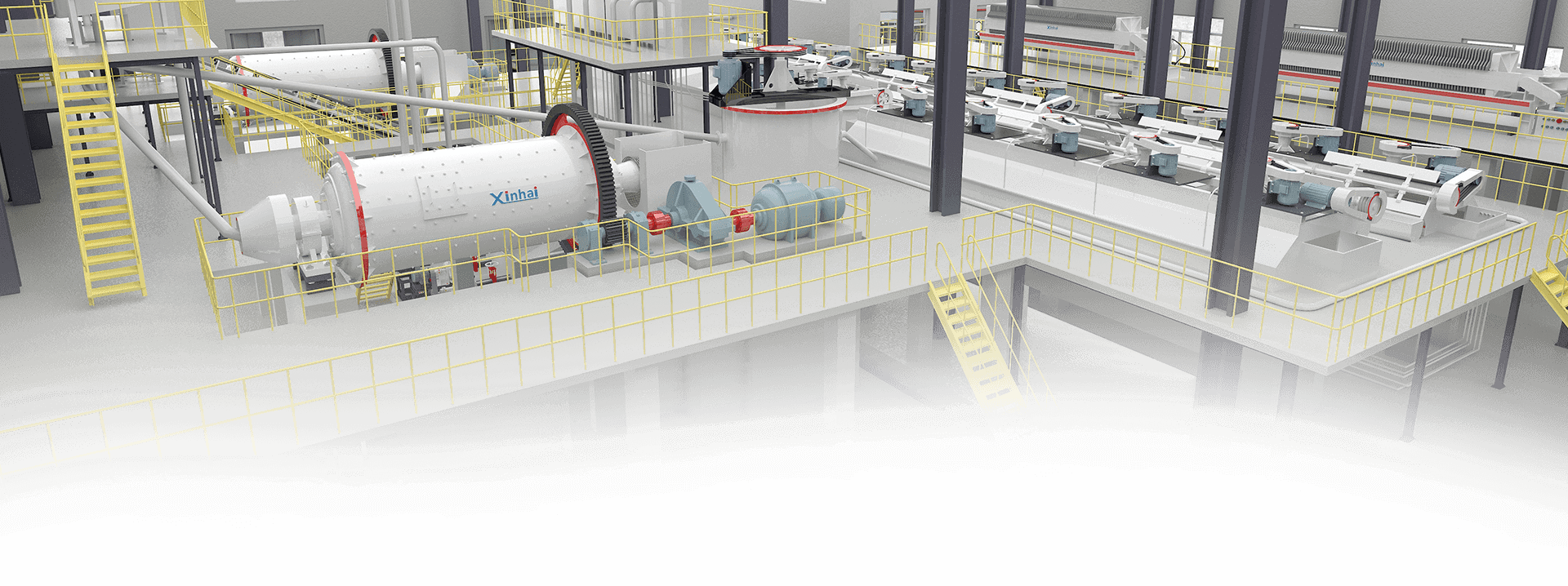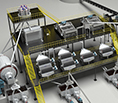How to Build a Mica Processing Plant?
 Sheena
Sheena
 Nov 04, 2025
Nov 04, 2025
 22
22
If you want to know more details about equipment, solutions, etc, please click the button below for free consultation, or leave your requirements!

Mica-mining-and-processing-plant
A mica processing plant is designed to extract, purify, and refine mica from raw ore into commercial-grade products such as sheet mica, dry ground mica, and mica flakes. This article explores the global mica market trends, mica beneficiation process, plant design, equipment, costs, and frequently asked questions — helping investors and operators understand how to build or upgrade a complete mica processing plant.
01Mica Beneficiation Process Overview
BackThe mica beneficiation process varies according to the type of ore and the desired end product. Typically, mica is extracted from pegmatite deposits through open-pit or underground mining and processed to separate mica flakes and sheets from gangue minerals such as quartz and feldspar.
The key processing stages are:
Crushing & Screening – Reduce large chunks of pegmatite to smaller particles for liberation.
Gravity Separation – Use shaking tables or spiral concentrators to recover coarse mica flakes.
Froth Flotation – Further purify fine mica by separating it from quartz, feldspar, and other silicates.
Drying & Classification – Remove moisture and classify mica by size (flakes, coarse, fine, powder).
Finishing – Grinding, polishing, or air classification to produce dry ground mica or sheet mica.
02Mica Processing Plant Flow Chart
BackA typical mica processing plant includes the following stages:
Raw Ore → Crushing → Screening → Gravity Separation → Flotation → Dewatering → Drying → Grinding → Classification → Packing
Explanation of Flow:
Crushing & Screening: Jaw crushers and vibrating screens ensure uniform feed size.
Gravity Separation: Spiral separators and shaking tables recover large mica flakes.
Flotation: Removes impurities like quartz and feldspar for high-grade concentrate.
Drying & Grinding: Rotary dryers and hammer mills create dry ground mica powder.
Classification & Packing: Air separators ensure uniform particle size before bagging.
This process ensures efficient recovery of both sheet and ground mica from hard rock ores.
03Equipment List and Technical Specifications
BackA complete mica processing plant for sale generally includes the following major equipment:
| Stage | Key Equipment | Function |
|---|---|---|
| Crushing | Jaw Crusher / Hammer Crusher | Primary size reduction of pegmatite ore |
| Screening | Vibrating Screen | Size classification before beneficiation |
| Gravity Separation | Spiral Concentrator / Shaking Table | Recover coarse mica flakes |
| Flotation | Flotation Machine | Separate fine mica from quartz/feldspar |
| Drying | Rotary Dryer | Remove moisture after beneficiation |
| Grinding | Raymond Mill / Ball Mill / Hammer Mill | Produce dry ground mica powder |
| Classification | Air Classifier | Achieve uniform particle size distribution |
| Dust Collection | Pulse Jet Bag Filter | Control dust and improve plant environment |
| Packaging | Automatic Packing Machine | Efficient bagging of final mica products |
Each plant can be customized based on ore characteristics, target product size, and production capacity.
04Cost Analysis: CAPEX and OPEX Breakdown
BackBuilding a mica processing plant involves both capital investment (CAPEX) and operational costs (OPEX).
CAPEX Components:
Crushing & grinding system
Separation and flotation units
Drying & packaging equipment
Electrical system, conveyors, storage, and civil works
Installation, commissioning, and training
Estimated CAPEX Range:
Small-scale plant (1,000–3,000 t/m): USD 2,500,000 – 4,000,000
Medium-scale plant (5,000–10,000 t/m): USD 6,000,000 – 10,000,000
Large-scale plant (>15,000 t/m): USD 1.2 – 2.5 million
OPEX Components:
Electricity and water
Maintenance and wear parts
Labor and supervision
Reagents (for flotation)
Transportation and packaging materials
Profitability Tip:
Optimizing recovery rate (especially fine mica in flotation) and minimizing energy consumption can reduce OPEX by up to 20–25%, significantly improving ROI.
05Plant Layout Design and Capacity Options
BackEfficient plant layout ensures smooth material flow, easy maintenance, and low operating cost.
Typical Layout Features:
Crushing and screening area located near raw ore feed.
Gravity and flotation circuits arranged in parallel for coarse and fine mica.
Drying and grinding sections positioned downstream with dust control systems.
Quality control lab and storage area near packing line.
Capacity Options:
| Category | Production (t/m) | Typical Use |
|---|---|---|
| Small Plant | 1,000–3,000 | Pilot scale, local production |
| Medium Plant | 5,000–10,000 | Regional supply, moderate investment |
| Large Plant | 15,000–25,000 | Industrial-scale production, export-oriented |
Your company can design modular plant layouts for quick installation, scalable production, and easy maintenance — ideal for investors aiming to expand capacity in stages.
06Why Choose a Complete Mica Processing Solution Provider
BackA reliable mica processing partner should provide more than just machinery. The most successful projects are backed by end-to-end technical support.
As a global manufacturer and engineering expert, we specialize in:
Customized process design for different mica ores.
Manufacturing complete equipment lines for crushing, gravity separation, flotation, drying, and grinding.
Turnkey EPC services covering design, equipment supply, installation, commissioning, and operator training.
OEM and modular solutions, enabling customers to scale up or adapt based on changing production needs.
Our engineering team ensures each mica processing plant achieves high recovery, low energy use, and stable operation, helping clients reduce costs and improve profitability.
07FAQ – Mica Processing Plant
BackQ1: What types of mica can be processed in your plant?
A: Our plants handle hard rock mica (muscovite, phlogopite), sheet mica, and scrap mica for dry ground mica production.
Q2: What is the difference between wet and dry ground mica?
A: Wet ground mica is processed in water to achieve extremely fine particles with a high gloss, ideal for cosmetics. Dry ground mica, on the other hand, uses mechanical grinding for industrial uses like paint and rubber.
Q3: Can you provide process design and installation service?
A: Yes. As a turnkey provider, we offer EPC (Engineering, Procurement, Construction) services, including process design, layout planning, equipment supply, installation, and training.
Q4: How long does it take to set up a complete mica processing plant?
A: A small plant can be commissioned in 3–5 months, while larger plants may take 6–9 months depending on site conditions and customization.
Q5: Can the plant be customized for local ore conditions?
A: Absolutely. Each deposit is different, so we perform ore sample testing and process optimization to ensure maximum recovery and quality.
08Conclusion
BackThe mica industry is entering a phase of modernization and value-added processing. With increasing demand for high-purity mica products across electronics, automotive, and cosmetics, investing in a mica processing plant is a strategic move for long-term growth.
Whether your goal is to recover sheet mica from hard rock deposits or produce dry ground mica for industrial applications, a complete mica processing plant for sale — designed and manufactured by an experienced turnkey provider — can deliver superior efficiency, reliability, and profitability.
By integrating engineering expertise, advanced equipment, and tailored process design, your company can lead the next generation of sustainable mica production.
 +86 183 3575 8886
+86 183 3575 8886 pinklaurabao@gmail.com
pinklaurabao@gmail.com




 Message
Message Chat Now
Chat Now



.jpg)













